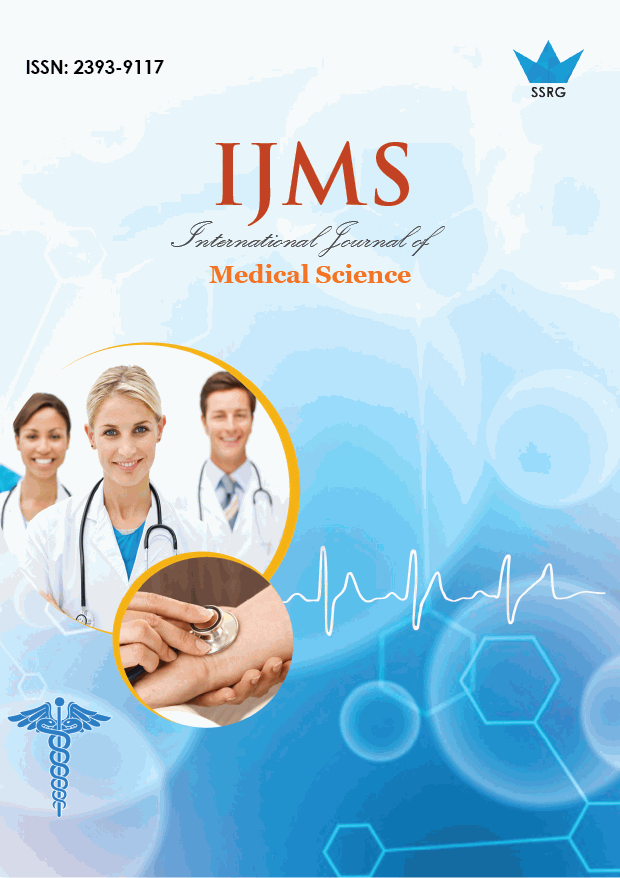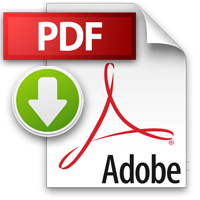Influencing Factors of Aphasia Severity: An Empirical Study Based on AphasiaBank

| International Journal of Medical Science |
| © 2025 by SSRG - IJMS Journal |
| Volume 12 Issue 5 |
| Year of Publication : 2025 |
| Authors : Wu Ling Liu Kaipeng |
How to Cite?
Wu Ling Liu Kaipeng, "Influencing Factors of Aphasia Severity: An Empirical Study Based on AphasiaBank," SSRG International Journal of Medical Science, vol. 12, no. 5, pp. 5-9, 2025. Crossref, https://doi.org/10.14445/23939117/IJMS-V12I5P102
Abstract:
This study creates a predictive model by methodically analyzing the effects of age, education level, gender, and aphasia type on aphasia severity using data from 232 aphasia patients from the AphasiaBank database. According to the findings, there is no discernible linear correlation between aphasia severity and either age or educational attainment. Nonetheless, decision tree and random forest models show that these two factors, combined with the type of aphasia, can accurately predict severity; the random forest model has an accuracy of 80%. On the Western Aphasia Battery (WAB), female patients scored significantly higher than male patients (p < 0.05), indicating that females have milder aphasia. However, a linear mixed-effects model suggests that sample randomness may have an impact on this finding. This study reveals the multifactorial interplay underlying aphasia severity and provides data-driven support for the development of personalized diagnostic and rehabilitation strategies in clinical practice.
Keywords:
Aphasia severity, Influencing factors, Predictive modeling, Random Forest, Western Aphasia Battery.
References:
[1] The RELEASE Collaborators et al., “Precision Rehabilitation for Aphasia by Patient Age, Sex, Aphasia Severity, and Time Since Stroke? A Prespecified, Systematic Review-based, Individual Participant Data, Network, Subgroup Meta-analysis,” International Journal of Stroke, vol. 17, no. 10, pp. 1067–1077, 2022.
[CrossRef] [Google Scholar] [Publisher Link]
[2] RELEASE Collaboration, “Communicating Simply, But not too Simply: Reporting of Participants and Speech and Language Interventions for Aphasia After Stroke,” International Journal of Speech-Language Pathology, vol. 22, pp. 302–312, 2020.
[CrossRef] [Google Scholar] [Publisher Link]
[3] Marian C. Brady et al., “RELEASE: A Protocol for a Systematic Review Based, Individual Participant Data, Meta- and Network Meta analysis, of Complex Speech-language Therapy Interventions for Stroke-related Aphasia,” Aphasiology, vol. 34, no. 2, pp. 137–157, 2019.
[CrossRef] [Google Scholar] [Publisher Link]
[4] Ralph. F. Cameron, Robert D. Currier, and Armin F. Haerer, “Aphasia and Literacy,” British Journal of Disorders of Communication, vol. 6, no. 2, pp. 161–163, 1971.
[Google Scholar] [Publisher Link]
[5] Alexandre Croquelois, and Julien Bogousslavsky, “Stroke Aphasia: 1,500 Consecutive Cases,” Cerebrovascular Diseases, vol. 31, no. 4, pp. 392–399, 2011.
[CrossRef] [Google Scholar] [Publisher Link]
[6] E. De Renzi, P. Faglioni, and P. Ferrari, “The Influence of Sex and Age on the Incidence and Type of Aphasia,” Cortex: A Journal Devoted to the Study of the Nervous System and Behavior, vol. 16, no. 4, pp. 627–630, 1980.
[CrossRef] [Google Scholar] [Publisher Link]
[7] Stefan. T. Engelter et al., “Epidemiology of Aphasia Attributable to First Ischemic Stroke: Incidence, Severity, Fluency, Etiology, and Thrombolysis,” Stroke, vol. 37, no. 6, pp. 1379–1384, 2006.
[CrossRef] [Google Scholar] [Publisher Link]
[8] Davida Fromm et al., “Discourse Characteristics in Aphasia Beyond the Western Aphasia Battery Cutoff,” American Journal of Speech Language Pathology, vol. 26, no. 3, pp. 762–768, 2017.
[CrossRef] [Google Scholar] [Publisher Link]
[9] Bernardo Gialanella, “Aphasia Assessment and Functional Outcome Prediction in Patients with Aphasia After Stroke,” Journal of Neurology, vol. 258, pp. 343–349, 2011.
[CrossRef] [Google Scholar] [Publisher Link]
[10] Jenna. R. Griffin-Musick et al., “The Impact of a University-based Intensive Comprehensive Aphasia Program (ICAP) on Psychosocial Well-being in Stroke Survivors with Aphasia,” Aphasiology, vol. 35, no. 12, pp. 1363–1389, 2020.
[CrossRef] [Google Scholar] [Publisher Link]
[11] Sam R. Harvey et al., “Treatment Dose in Post-stroke Aphasia: A Systematic Scoping Review,” Neuropsychological Rehabilitation, vol. 31, no. 10, pp. 1629–1660, 2020.
[CrossRef] [Google Scholar] [Publisher Link]
[12] Daniel B. Hier et al., “Gender and Aphasia in the Stroke Data Bank,” Brain and Language, vol. 47, no. 1, pp. 155–167, 1994.
[CrossRef] [Google Scholar] [Publisher Link]
[13] David Kemmerer, Cognitive Neuroscience of Language, New York, NY, USA: Psychology Press, 2022.
[CrossRef] [Google Scholar] [Publisher Link]
[14] A. Kyrozis et al., “Incidence and Predictors of Post-stroke Aphasia: The Arcadia Stroke Registry,” European Journal of Neurology, vol. 16, no. 6, pp. 733–739, 2009.
[CrossRef] [Google Scholar] [Publisher Link]
[15] Gabriele Miceli et al., “Influence of Age, Sex, Literacy and Pathologic Lesion on Incidence, Severity and Type of Aphasia,” Acta Neurologica Scandinavica, 1981.
[CrossRef] [Google Scholar] [Publisher Link]
[16] Katie Monnelly et al., “Intensive and Comprehensive Aphasia Therapy—A Survey of the Definitions, Practices and Views of Speech and Language Therapists in the United Kingdom,” International Journal of Language & Communication Disorders, vol. 58, no. 6, pp. 2077 2102, 2023.
[CrossRef] [Google Scholar] [Publisher Link]
[17] Palle Moller Pedersen et al., “Aphasia in Acute Stroke: Incidence, Determinants, and Recovery,” Annals of Neurology: Official Journal of the American Neurological Association and the Child Neurology Society, vol. 38, no. 4, pp. 659–666, 1995.
[CrossRef] [Google Scholar] [Publisher Link]
[18] Sadhvi Saxena, and Argye Hillis, “An Update on Medications and Noninvasive Brain Stimulation to Augment Language Rehabilitation in Post-stroke Aphasia,” Expert Review of Neurotherapeutics, vol. 17, no. 11, pp. 1091–1107, 2017.
[CrossRef] [Google Scholar] [Publisher Link]
[19] Saryu Sharma et al., “Gender Differences in Aphasia Outcomes: Evidence from the AphasiaBank,” International Journal of Language & Communication Disorders, vol. 54, no. 5, pp. 806-813, 2019.
[CrossRef] [Google Scholar] [Publisher Link]
[20] S. Tsouli et al., “Significance of Aphasia after First-ever Acute Stroke: Impact on Early and Late Outcomes,” Neuroepidemiology, vol. 33, no. 2, pp. 96–102, 2009.
[CrossRef] [Google Scholar] [Publisher Link]
[21] Mikkel Wallentin, “Sex Differences in Post-stroke Aphasia Rates are Caused by Age. A Meta-analysis and Database Query,” PloS One, vol. 13, no. 12, 2018.
[CrossRef] [Google Scholar] [Publisher Link]
[22] Anna Zumbansen, and Alexander Thiel, “Recent Advances in the Treatment of Post-stroke Aphasia,” Neural Regeneration Research, vol. 9, no. 7, pp. 703–706, 2014.
[CrossRef] [Google Scholar] [Publisher Link]
[23] Chen Ying, and Li Yan-Sheng, “The Effect of Gender on Post-stroke Aphasia,” Journal of Shanghai Jiao Tong University (Medical Science), vol. 29, no. 8, pp. 978–981, 2009.
[Publisher Link]
[24] Ge Hong, and Jiang Jin, “A Survey on the Relationship Between Language Rehabilitation and Social Factors in Patients with Aphasia,” Journal of Soochow University (Medical Edition), vol. 24, no. 6, pp. 829–831, 2004.
[Publisher Link]
[25] He Xiaoying, “The Relationship Between Treatment of Aphasia and Various Factors,” Journal of Practical Cardiovascular and Cerebrovascular Diseases, vol. 1, pp. 42-43, 1997.
[Publisher Link]
[26] Li Hongling et al., “The Occurrence and Influencing Factors of Speech Dysfunction in Stroke Patients,” Chinese Journal of Rehabilitation Medicine, no. 8, pp. 473-475, 2003.
[Publisher Link]
[27] Wang Yuyuan, Sun Changhui, and Bai Yulong, “A Retrospective Analysis of Factors Influencing Types and Severity of Aphasia in Patients with Post-stroke Aphasia,” Chinese Journal of Rehabilitation Medicine, vol. 6, pp. 323-328, 2024.
[Publisher Link]
[28] Xu Ling, and Wang Tao, “Research Progress on Screening Tools for Post-stroke Aphasia with Cognitive Impairment,” Nursing Research, no. 1, pp. 82–87, 2023.
[Publisher Link]
[29] Yao Jingfan, and Zhang Yumei, “Research on Factors Related to the Types of Aphasia after Stroke,” Proceedings of the 12th Beijing International Rehabilitation Forum, 2022.
[Publisher Link]
[30] J.F. Yao et al., Research on the Associated Factors of Types of Post-stroke Aphasia, Compilation of Papers from the 18th National Conference on Neurology of the Chinese Medical Association, 2015. [Online]. Available: https://kns.cnki.net/kcms2/article/abstract?v=IPzr95zWmwQPNixDfGnDnk1r_1543 NuP6FC8UgR4iwDbt7PhQF9_U9pY_eRQkO1BFeuO4Bwwcmgh6yP_KwaFWTzoAFXduStFNkq96fXfsqtMlTpfnWILu8rjinIVdugzA pcGgu_PRTO5VguV_K_RtpQ7dkp4GptypVbeqOxi2UOBgRgVDGw6Q==&uniplatform=NZKP
[31] Y.M. Zhang et al., “Analysis of Factors Influencing the Type of Aphasia in Stroke Units,” Proceedings of the 9th National Conference on Cerebrovascular Disease Rehabilitation, pp. 196–197, 2005. [Online]. Available: https://kns.cnki.net/kcms2/article/abstract?v=IPzr95zWmwQuqANNBoGDB_ExQbGgbXKDQvKNRBxV4eZv_X249AynjO kQzB4ER3HAJpxgE-cgxF6IbMYLqJiDhTgZQVy4ury-eKOJPHDIkG4EuXx1u-AuacBieclAlP0wY dC0Onxla6DApe3aTv86WRzUsef9Vu7fjoqVLRnF8=&uniplatform=NZKPT
[32] Zhao Nisha, and Jiang Meng, “Research on Language Barriers among Chinese-Speaking Aphasics in China Over the Past Thirty Years,” Journal of Audiology and Speech Disorders, vol. 29, no. 4, pp. 464–467, 2021.
[Publisher Link]
[33] Liye Zhou, and Jing, “Analysis of Prognosis and Influencing Factors of Aphasia After Stroke,” Chinese Medical Guide, no. 19, pp. 22 24, 2013.
[Publisher Link]

 10.14445/23939117/IJMS-V12I5P102
10.14445/23939117/IJMS-V12I5P102